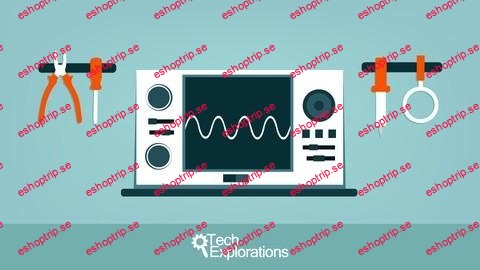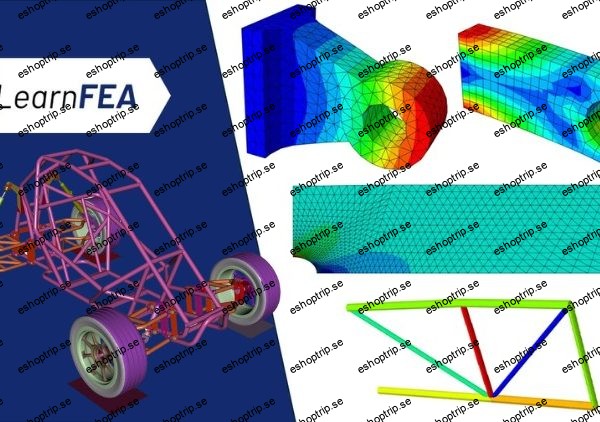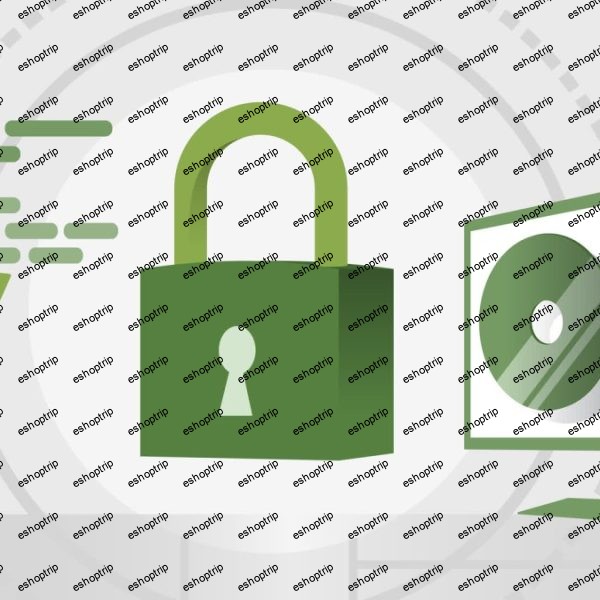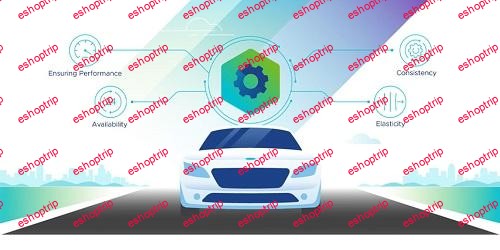Last updated 5/2024
MP4 | Video: h264, 1920×1080 | Audio: AAC, 44.1 KHz
Language: English | Size: 9.31 GB | Duration: 5h 24m
Setting up your own electronics lab at home can be a daunting. This course will help you through the maze of options.
What you’ll learn
Learn the basics components of a well-equiped electronics lab for the non-professional
Learn about power tools, like the electric drill, the hot glue gun and rotary tools.
Learn about soldering and soldering (as well as de-soldering) tools.
Learn about simulation, computer-aided design and electronic circuit calculators
Understand the use of sophisticated test instruments like the oscilloscope, and the function generator.
Requirements
Experience with technologies like the Arduino will help to understand the use of the tools covered in this course.
Basic understanding electronics.
Description
This course is designed to help you setup your own electronics lab.
If you are starting your adventures in electronics, and you are not looking to setup a professional electronics lab, then this course is perfect for you.
A lab is a place at your home that you have specifically organised in a way that promotes your enjoyment of working with electronics.
It is where your tools, components and instruments are.
It is where you do your circuit experiments and the bulk of your learning.
There are significant differences between professional and hobbyist electronics labs. That’s because the amateur electronics lab is far more restricted in every respect to the lab of a professional.
If you are a hobbyist, using a spare room or your bedroom as your electronics lab, then this course will help you make the most of it.
In this course, I will discuss the basic features of an amateur electronics lab by showing you how I have organised mine.
I have most of the restrictions of an amateur, and with the exception of a few of the items in my kit, my lab is purely an amateur lab.
In each lecture, I present a specific topic and in most cases I demonstrate the use of a tool or instrument.
Through these demos, I wish to help you gain a working understanding of what these items are designed for.
You will not become an expert, but you will know enough to know when you need one.
I am always available to discuss any of the topics I present in this course, so please feel free to ask using the course’s discussion tool.
Overview
Section 1: Introduction: The electronics maker lab
Lecture 1 Introduction
Lecture 2 My electronics workbench
Lecture 3 The parts shown in this course
Section 2: Essentials
Lecture 4 Introduction
Lecture 5 Wires, screwdrivers, tweezers, breadboards
Lecture 6 Wire strippers, cutters, helping hands
Lecture 7 Storage
Lecture 8 Components
Lecture 9 Conclusion
Section 3: Power
Lecture 10 Introduction
Lecture 11 Battery packs, batteries, chargers
Lecture 12 Walled power supplies
Lecture 13 Bench power supply
Lecture 14 Conclusion
Section 4: Power tools
Lecture 15 Introduction
Lecture 16 The rotary tool
Lecture 17 Finish project box holes with a reamer
Lecture 18 A better way to open a hole in a plastic box and attach a toggle switch
Lecture 19 The hot glue gun
Lecture 20 Conclusion
Section 5: Test equipment
Lecture 21 Introduction
Lecture 22 Multimeters
Lecture 23 Auto-ranging multimeters
Lecture 24 Multimeter demo: DC measurement
Lecture 25 Multimeter demo: AC measurement
Lecture 26 The oscilloscope
Lecture 27 Decoding I2C with the oscilloscope
Lecture 28 The function generator
Lecture 29 Function generator, a demo testing a simple filter
Lecture 30 Conclusion
Section 6: Soldering and wiring
Lecture 31 Introduction
Lecture 32 Soldering tools
Lecture 33 Soldering through-hole components demo
Lecture 34 Desoldering through-hole components with a desoldering gun
Lecture 35 Soldering surface-mount components demo
Lecture 36 Desoldering SMD with hot air reworking tool
Lecture 37 Heatshrink tubing
Lecture 38 Crimping tools
Lecture 39 Conclusion
Section 7: Software
Lecture 40 Introduction
Lecture 41 Simulators
Lecture 42 Demo of iCircuit
Lecture 43 Calculators
Lecture 44 Smartphone apps
Lecture 45 Electronic design automation with Kicad
Lecture 46 Conclusion
Section 8: Other topics
Lecture 47 Introduction
Lecture 48 Safety
Lecture 49 How to read a datasheet
Lecture 50 Conclusion
Section 9: Conclusion and Bonus Lecture
Lecture 51 Course Conclusion
Lecture 52 Bonus Lecture
Anyone with an interest in electronics, who is purchasing tool for their work bench. ,Take this course before you buy anything!
https://anonymz.com/?https://www.udemy.com/course/workbench/










